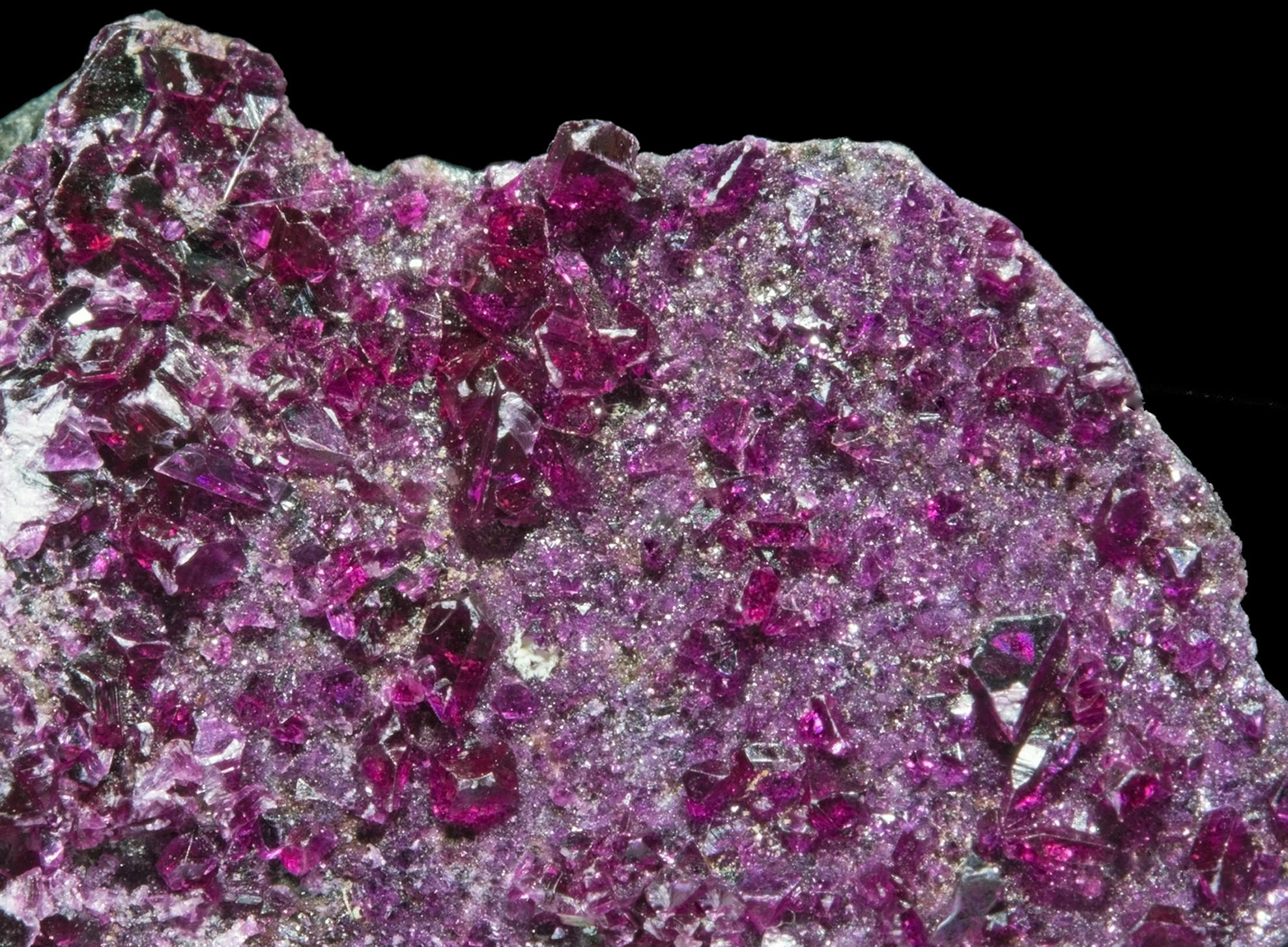
斜绿泥石宝石:特性、含义、价值等
 斜绿泥石(发音为KLINE-oh-klore )是一类绿泥石矿物,其中一些被切割成宝石。斜绿泥石中一种常见的宝石品种是蛇纹石。
斜绿泥石(发音为KLINE-oh-klore )是一类绿泥石矿物,其中一些被切割成宝石。斜绿泥石中一种常见的宝石品种是蛇纹石。
绿泥石和斜绿泥石有什么区别?斜绿泥石是绿泥石族的一个亚族——所有斜绿泥石都是绿泥石,但并非所有绿泥石都是斜绿泥石。
斜绿泥石稀有吗?作为一种矿物,它并不稀有。事实上,斜绿泥石是最常见的绿泥石类型之一。然而,其宝石形态却十分罕见。它们大多被称为收藏级宝石。
在本指南中,我们将介绍所有斜绿泥石的种类、特性、价格、历史等等!
 图片来源:Rob Lavinsky, iRocks.com – CC-BY-SA-3.0
图片来源:Rob Lavinsky, iRocks.com – CC-BY-SA-3.0
关于斜绿泥石
“斜绿泥石”可能指一组绿泥石矿物,也可能指该组中的单个矿物。用作半宝石的斜绿泥石种类包括蛇纹石、斜绿泥石和雪里登石。斜绿泥石是处女座和双鱼座的占星护身符。
斜绿泥石的其他名称包括:
氯硝基苯
斜氯罗
斜绿泥石
格拉斯蒂特
塔贝格特
亚绿泥石
绿磷矿
斜绿泥石可以呈现哪些颜色?大多数斜绿泥石呈某种绿色,不过你也会看到其他颜色的斜绿泥石,比如卡默勒石,它的色调从红色到紫色不等。
斜绿泥石在工业上有什么用途?斜绿泥石和绿泥石除了用作建筑石材外,总体来说没有太多工业用途。
话虽如此,像斜绿泥石这样的绿泥石矿物通常存在于粘土中,而粘土在工业上有着广泛的应用。在伊朗,一种由白云石、绿泥石和滑石组成的天然斜绿泥石粘土化合物被用来制作石雕器皿。
 图片来源:Raimond Spekking / CC BY-SA 4.0(来自维基共享资源)
图片来源:Raimond Spekking / CC BY-SA 4.0(来自维基共享资源)
斜绿泥石规格和特性
绿泥石矿物组包括云母层状硅酸盐,其成分中铁、铝、硅和镁相互替代。
斜绿泥石和鳖绿泥石是最常见的绿泥石种类。事实上,斜绿泥石是富含镁的端元,而鳖绿泥石是富含铁的端元。
斜绿泥石的化学式可以写成 Mg5Al(AlSi3O10)(OH)8 或 (Mg,Fe2+)5Al(Si3Al)O10(OH)8,后者解释了亚铁元素的常见存在。
斜绿泥石中的其他常见杂质有锰、锌、钙和铬。
斜绿泥石晶体形状可为棱柱状、板状和拟六边形。该矿物也可呈块状,例如叶状、片状、球状、放射状和/或纤维状。
含铁的斜绿泥石具有不同的氧化程度,从而改变其外观和光学特性。
斜绿泥石的(一般)特性如下:
莫氏硬度:2-2.5
颜色: 绿色、黄绿色、黄色、橄榄绿、黑绿色、蓝绿色、白色、无色、粉色、红色、红紫色、紫色
晶体结构:单斜,伪六方
光泽:玻璃光泽、珍珠光泽、油脂光泽或暗淡光泽
透明度:透明至不透明
折射率:1.571-1.600
密度:2.55-3.02
乳沟:{001} 完美
断口:不均匀/不规则(在无解理、平坦的表面上);云母
条痕:绿白色至白色
发光:无
多色性:存在;通常为淡黄绿色或淡蓝绿色至淡绿黄色或淡蓝绿色;雪里登石:无色、淡绿色、淡黄绿色、淡棕黄色;卡默莱石:紫色至红色
双折射率:0.005-0.011
分散性:未知
光学现象:猫眼效应(在蛇纹石中)
了解了基础知识之后,斜绿泥石有哪些不同类型?
斜绿泥石的种类
斜绿泥石矿物种类繁多。我们先从非宝石类矿物开始:
刚玉:富铝品种
硅铝石:富含铁和硅的品种
含镍斜绿泥石:含镍品种
奔宁:三方或伪三方品种
赤铁矿:富含二氧化硅,缺乏铁的品种
比色绿泥石/比色绿泥石:富含铁的品种
斜绿泥石:斜绿泥石系列或俄罗斯铁矿石中的中间体/未知矿物的历史名称
滑石绿泥石:富含二氧化硅、铝含量低的品种;注意:滑石不是绿泥石
关于宝石:
蛇纹石

蛇纹石可以说是最受欢迎的斜绿泥石,它拥有森林般的绿色,以及浅绿至银色羽毛状的放射状图案。这些图案源自虹彩云母纤维内含物,这种内含物可产生猫眼效应。
卡默雷特
 图片来源:Géry PARENT, CC-BY-SA-4.0
图片来源:Géry PARENT, CC-BY-SA-4.0
卡默莱石(Kammererite)是一种含铬的斜绿泥石,颜色从红色到紫红色、粉红色或淡紫色。它是最稀有的斜绿泥石之一,宝石级的样本仅产自土耳其,不过也有2016颗凸圆形宝石产自印度。
这种石头可能类似于紫龙晶,但莫氏硬度明显较低。
谢里登石
谢里登石是一种富含铝的宝石,因其原产地(美国怀俄明州谢里登县)而得名。谢里登石的颜色有橄榄绿、蓝绿和黑绿。
其他斜绿泥石宝石
 上图:含金色金红石针状体和苔绿色斜绿泥石的石英晶体 | 图片来源:Rob Lavinsky, iRocks.com – CC-BY-SA-3.0
上图:含金色金红石针状体和苔绿色斜绿泥石的石英晶体 | 图片来源:Rob Lavinsky, iRocks.com – CC-BY-SA-3.0
斜绿泥石也出现在其他宝石中,例如缅甸翡翠和莫西西。这两种宝石都是岩石,这意味着它们含有多种(有时是多种多样的)矿物,其中一种通常是斜绿泥石。
此外,一些含有睡莲叶状斜绿泥石包裹体的石英(有时称为“斜绿泥石石英”)相当受欢迎且具有吸引力。

斜绿泥石历史
1851年,美国地质学家威廉·菲普斯·布莱克将在美国宾夕法尼亚州发现的矿物样本命名为“斜绿泥石”。该名称源于希腊语“klino ”(意为“倾斜的”)和“chlōros ”(意为“绿色”),因为这些矿物呈绿色板状晶体,轴心倾斜(锥形,金字塔形末端)。
此前,德国地质学家亚伯拉罕·戈特洛布·沃纳(Abraham Gottlob Werner)于1789年将斜绿泥石命名为“绿泥石”,这个名称也是源于上文提到的希腊语“绿色”一词。
然而,斜绿泥石自史前时代就已被使用,特别是在中东地区。
古代斜绿泥石文物
斜绿泥石和绿泥石矿物已被使用数千年,特别是在中东地区,用于制作印章、墓碑和珠子等物品。
考古学家发现了含有绿泥石的史前文物。其中一些是实用物品,例如烟斗、旗石、颈饰、管子、纺锤;还有很多是装饰品,例如珠子、花瓶、小雕像、小器皿和护身符。
在早王朝时期(公元前 2900 年至 2350 年)的皇家坟墓和寺庙中发现的美索不达米亚绿泥石器皿很可能是具有仪式或丧葬重要性的奢侈品。
 上图:肉桂色钙铝榴石,含绿色透辉石晶体和深绿色斜绿泥石晶体 | 图片来源:Rob Lavinsky, iRocks.com – CC-BY-SA-3.0
上图:肉桂色钙铝榴石,含绿色透辉石晶体和深绿色斜绿泥石晶体 | 图片来源:Rob Lavinsky, iRocks.com – CC-BY-SA-3.0
斜绿泥石的治疗特性
斜绿泥石是一种主要呈绿色的疗愈石,其含义与其他 绿色宝石相似,象征着焕发活力、重新开始和重燃希望。斜绿泥石晶体可用作脉轮石,平衡整个脉轮系统。
身体康复
从物理角度来说,斜绿泥石可以治疗以下问题:
头痛
肌肉僵硬
鼻窦感染
疲劳
情绪疗愈
从情感上来说,斜绿泥石的形而上学特性被认为可以增强或促进:
创造力
思想开放
专注
减轻压力
内心的平静
个人成长

斜绿泥石宝石特性
除了稀有性之外,斜绿泥石宝石的价值还取决于颜色、切工、净度、透明度和克拉重量。
颜色
许多收藏家都在寻找祖母绿般的斜绿泥石宝石。但像卡默尔石的红色和紫色等稀有色调也相当珍贵。
纯斜绿泥石是无色或白色的。常见的绿色色调来自铁杂质。铬会导致红色/粉红色至紫色的色调,而其他杂质则会导致黄色至棕色的色调。
切
斜绿泥石质地较软,具有完美的解理,因此刻面难度较大。目前只有蛇纹石、卡默勒石和雪里登石被刻面,而这些宝石的刻面效果都非常珍贵。
宝石品种的常见切割包括:
蛇纹石: 凸圆形宝石、雕刻品和装饰品
Kammererite :凸圆形宝石、雕刻品和原石晶体
雪里登石:凸圆形宝石和原石晶体
清晰度和透明度
净度,即可见内含物的程度,会影响宝石的透明度和价值。透明度更高的斜绿泥石宝石可能价值更高,但内含物通常会产生理想的效果,就像蛇纹石中的内含物一样。
斜绿泥石也可能是其他宝石的内含物,例如:
石英
埃塞俄比亚祖母绿
德国黄玉
克拉重量和尺寸
大量的斜绿泥石样本可以产生相当大的凸圆形宝石,但刻面宝石通常很小,最多 5 或 6 克拉(对于斜绿泥石,最多 2 克拉)。
治疗
斜绿泥石宝石通常不经过处理,但有些可能会经过蜡处理以增加其耐用性。
那么,斜绿泥石是如何形成的呢?
 上图:石榴石和斜绿泥石标本
上图:石榴石和斜绿泥石标本
斜绿泥石的形成与来源
当岩石经历低级变质或热液蚀变时,会形成斜绿泥石,将内部的矿物(如角闪石、黑云母和辉石)转化为斜绿泥石。
斜绿泥石存在于哪种岩石中?它存在于许多变质岩或沉积岩中,例如:
绿泥石片岩
沸石相
蛇纹岩
弹珠
角闪岩
玄武岩
辉长岩
从地理上看,斜绿泥石分布在哪里?
采矿地点
有吸引力的斜绿泥石晶体主要分布在:
澳大利亚
奥地利
巴西
加拿大
德国
意大利
墨西哥
俄罗斯
苏格兰
瑞典
瑞士
火鸡
英国(英格兰)
美国(亚利桑那州、康涅狄格州、科罗拉多州、内华达州、新泽西州、纽约州、宾夕法尼亚州、佛蒙特州、怀俄明州)
宝石品种的宝石级标本来源较少:
蛇纹石:俄罗斯西伯利亚
卡默莱特:土耳其;印度
雪里登石:美国怀俄明州
那么,斜绿泥石的价格是多少?

斜绿泥石的价格和价值
尽管十分稀有,斜绿泥石宝石的价格却比您想象的要便宜。
除了含有斜绿泥石的石英外,蛇纹石是唯一容易找到的多面宝石。
刻面蛇纹石的价格约为每克拉10至15美元。凸圆形宝石的价格通常约为每克拉6美元,而原石的价格约为每克拉1美元。最昂贵的选择是巨大的雕刻品或球形宝石,价格可能在500至1,000美元之间。
卡默雷石主要以凸圆形宝石形式出售,每颗售价通常在10至25美元之间。雕刻品的价格则根据复杂程度和尺寸而定,价格在30至200美元甚至更高。原石晶体的价格则根据品质和尺寸而定,从20美元左右到400美元不等。
粗糙的斜绿泥石标本的价格范围很广,从 2.50 美元到 400 美元不等。
斜绿泥石的保养和维护
就宝石保养而言,斜绿泥石宝石相当脆弱。就珠宝而言,我们建议只选择吊坠或耳环,并始终选择保护性镶嵌。
宝石对热敏感,请将其存放在阴凉处,与其他宝石分开存放。您可以使用温水、温和的肥皂和柔软的超细纤维布清洁它。
倾向于选择斜绿泥石吗?
名为“斜绿泥石”的宝石或许平凡无奇,但切勿以貌取人!这些水晶拥有美丽的天使翅膀、浪漫的粉色色调,以及焕然一新的绿色,足以让任何空间或服装焕然一新。
搜索Gemstone Encyclopedia
最新的文章
棕榈象牙雕刻,又称植物象牙,是象牙的天然替代品,取自南美洲棕榈树(Phytelephas palm)的果实,并以符合伦理的方式采集。本指南将带您全面了解棕榈象牙!
15th Jan 2026
彩虹格纹日光石是一种长石,由于内部含有各种包裹体,呈现出三种绚丽的光学效应。它绚丽多彩的光泽和格纹图案使其成为收藏家梦寐以求的珍宝!
12th Jan 2026
文章分类
How To's is where you will find helpful articles from gem Rock Auctions on how to cut gemstones, select gemstones and buy gemstones.
9文章数
